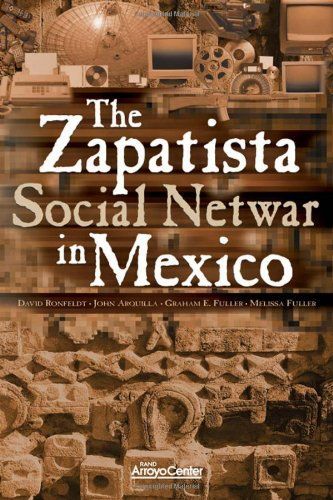
The Zapatista "Social Netwar" in Mexico
The information revolution is leading to the rise of network forms of organization in which small, previously isolated groups can communicate, link up, and conduct coordinated joint actions as never before. This in turn is leading to a new mode of conflict--netwar--in which the protagonists depend on using network forms of organization, doctrine, strategy, and technology. Many actors across the spectrum of conflict--from terrorists, guerrillas, and criminals who pose security threats, to social activists who may not--are developing netwar designs and capabilities. The Zapatista movement in Mexico is a seminal case of this. In January 1994, a guerrilla-like insurgency in Chiapas by the Zapatista National Liberation Army (EZLN), and the Mexican government's response to it, aroused a multitude of civil-society activists associated with human-rights, indigenous-rights, and other types of nongovernmental organizations (NGOs) to swarm--electronically as well as physically--from the United States, Canada, and elsewhere into Mexico City and Chiapas. There, they linked with Mexican NGOs to voice solidarity with the EZLN's demands and to press for nonviolent change. Thus, what began as a violent insurgency in an isolated region mutated into a nonviolent though no less disruptive social netwar that engaged the attention of activists from far and wide and had nationwide and foreign repercussions for Mexico. This study examines the rise of this social netwar, the information-age behaviors that characterize it (e.g., extensive use of the Internet), its effects on the Mexican military, its implications for Mexico's stability, and its implications for the future occurrence of social netwars elsewhere around the world.